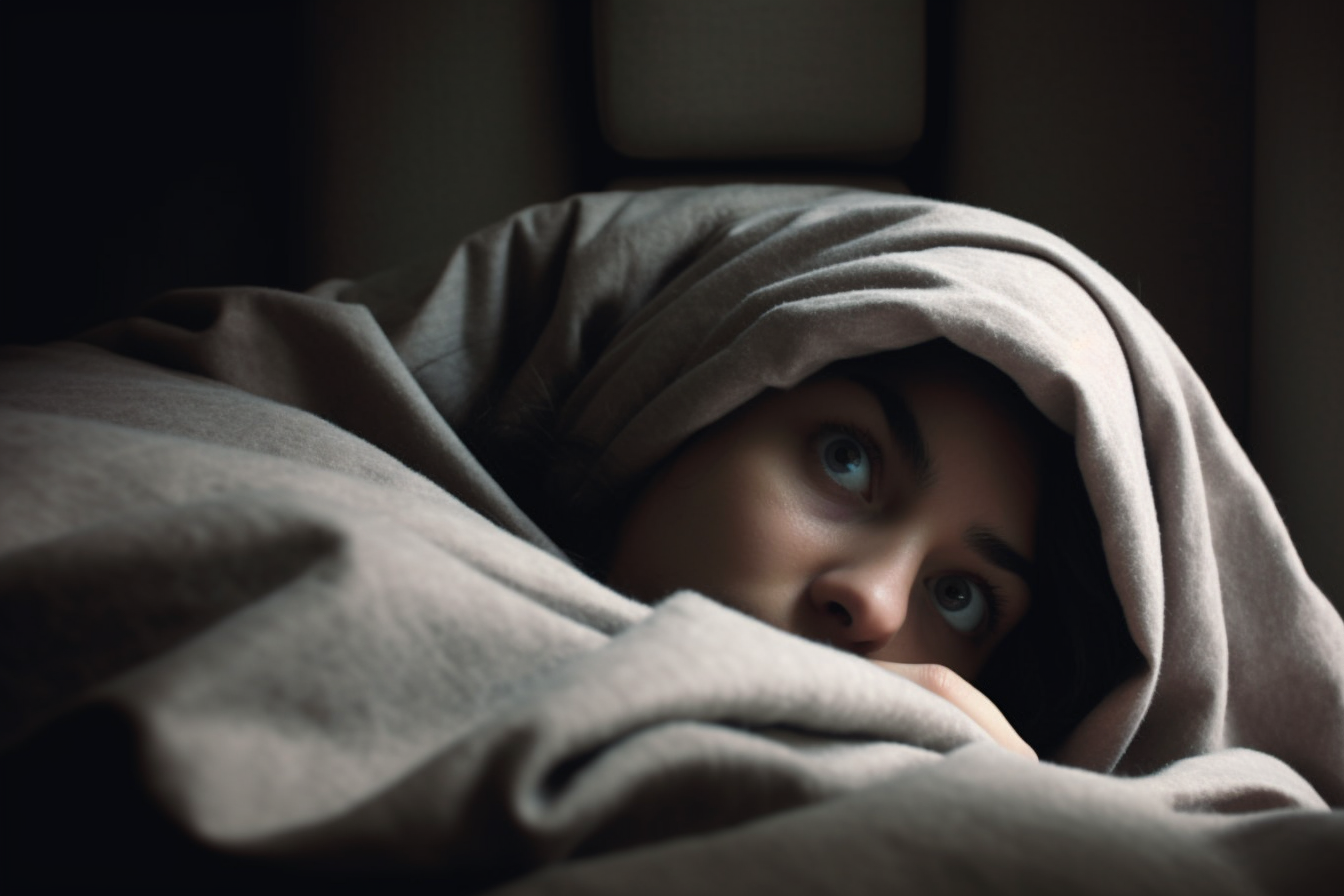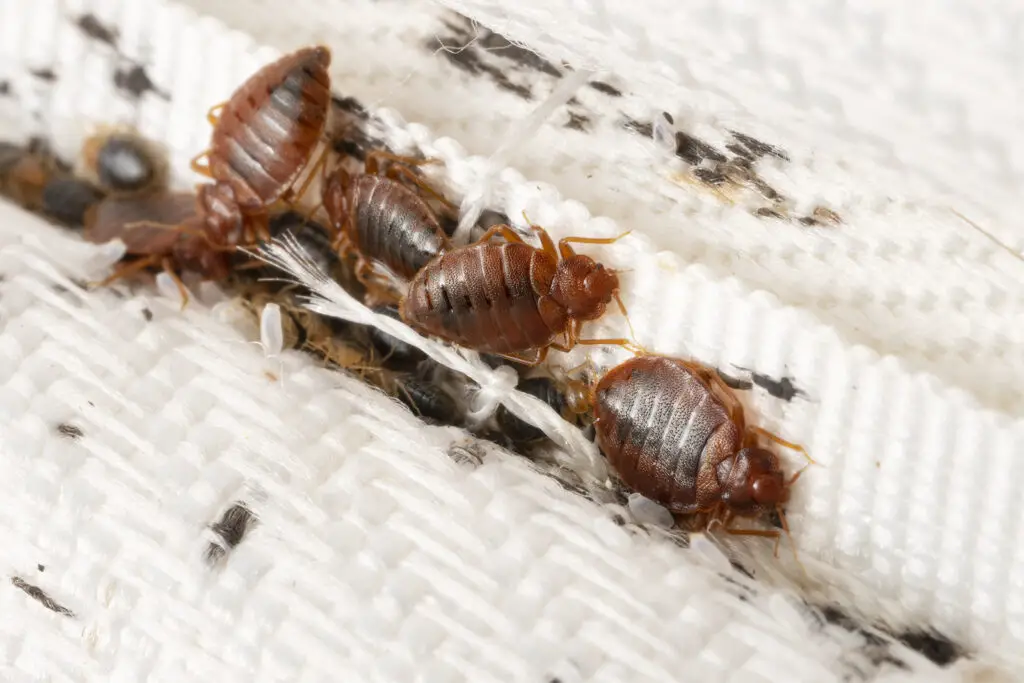
A concern over the feeling of bed bugs crawling all over you as you sleep is very understandable. Bed bugs have a reputation for being sneaky, difficult to eliminate, and are infamous for causing discomfort. It’s only natural to wonder if you can feel them crawling on your skin, and if this is one way you might know if you have an infestation.
It is possible to feel bed bugs crawling on you, but it’s highly unlikely. Bed bugs are tiny insects, roughly the size of an apple seed and as light as an ant. This means that unless you are extremely sensitive, you’re not likely to feel them moving across your skin.
That said, some individuals may be more perceptive when it comes to detecting the sensation of bed bugs on the skin, particularly in more sensitive areas of their body.
What Are Bed Bugs
Bed bugs are small, oval-shaped insects that feed on the blood of humans and animals. They are usually brownish in color and have flat bodies. After feeding their bodies swell and turn a reddish hue. Although bed bugs can’t fly, they are quite mobile and can easily crawl across various surfaces, including walls and ceilings.
These tiny insects are about the size of an apple seed, which makes detecting them quite challenging. They are mostly active during the night and are known to hide in narrow spaces, such as mattress seams, box springs, and bed frames. This allows them to remain close to their hosts without being noticed.
Bed bugs do not transmit any diseases but can cause itching and discomfort to those they bite. The frequent scratching of itchy bites can also then lead to skin infections. Moreover, the presence of bedbugs can also affect your sleep quality, causing anxiety and insomnia.
Although some people might be more sensitive to their bites, detecting the presence of bed bugs before they bite is quite difficult. Bed bugs usually scatter once a source of light is detected, making it essential to know the signs of an infestation such as small reddish-brown fecal spots on bedding, the skins they shed as they grow, and a sweet, musty odor.
Can You Feel Bed Bugs Crawling
Whether or not one can feel bed bugs crawling on their skin can be quite a debatable topic. Based on the conversations I’ve read online, some people claim that they can definitely feel bed bugs crawling on them, while others had no idea they had an infestation. It seems so subjective, so let’s dive a little deeper.
According to Central Ohio Bed Bugs, these little insects are small and lightweight, often compared to the size of an apple seed and with a weight close to an ant. It’s likely that many individuals may not detect their presence due to this minute size and weight. However, there are a few factors that make it more likely for someone to feel these critters crawling on their skin.
Firstly, the location where the bed bug is crawling comes into play. If a bed bug is on the palm of your hand or an area with increased sensitivity, you may be more likely to feel its presence (Bed Bugs Insider). Additionally, if the bug is walking through hairs on your arms or legs the sensation of it crawling is easier to notice.
Another aspect to consider is the number of bed bugs present. If multiple bed bugs are crawling on your skin at the same time, you have a much higher chance of feeling them. It’s also important to note that bed bugs are more likely to come out in the dark, making you more prone to feel them when you’re in bed and trying to fall asleep.
It’s not impossible to feel bedbugs crawling on your skin, but several factors influence your ability to detect their presence. Ultimately, being aware of these factors can help you stay vigilant in your efforts to keep your home bed bug-free.

Signs of Bed Bug Infestation
Here is a list of some key indicators of a bed bug infestation. Paying attention to these signs can help in early detection and treatment.
Physical Traces
One of the most common signs of bed bugs is finding physical traces of their existence. Small, dark fecal spots, as well as shed skins, may be visible on your bedsheets, mattress, or even on your bedroom walls. Another telltale sign is discovering tiny, cream-colored eggs or eggshells. Although it may be difficult to spot them as they’re only about 1mm in size, looking near cracks and crevices in your bed frame, nightstand, or baseboards might increase your chances of finding these clues.
Bites and Skin Reactions
While bites alone may not be definitive proof of a bed bug infestation, they can certainly raise suspicion. Bed bug bites are typically red, itchy welts that may appear in a zigzag pattern or in a line. If you notice that you’re waking up with bite marks that weren’t there when you went to bed, it could be an indicator of a bed bug issue. It’s important to keep in mind that not everyone reacts to bed bug bites in the same way. Some may experience more severe reactions, while others might not even display visible signs.
In addition to bites, you may develop other skin reactions due to bed bug activity. For example, you might feel an itching or crawling sensation or notice patches of irritated skin during the day. Unfortunately, these sensations can be difficult to attribute to bed bugs, as they can also be caused by other factors like allergies or skin conditions.
Overall, it’s essential to pay close attention to these signs and inspect your sleeping area regularly. If you suspect a bed bug infestation, it’s best to consult a professional for advice on treatment and prevention methods.
Preventing Bedbugs
Cleanliness Measures
As someone who’s a little paranoid about avoiding bed bug infestations, one of the best preventative measures I’ve found is to simply maintain a clean sleeping environment. This includes regularly vacuuming floors and furniture, washing bed linens in hot water, and keeping clothing off the floor. A clutter-free space also makes it difficult for bedbugs to hide and breed, so it’s crucial to de-clutter and organize my living space frequently. For more information on how bed bugs spread and cleanliness tips, check out Healthline.
Barrier Techniques
Another approach I discovered in my research is the use of barrier techniques to keep bed bugs away from my sleeping area. One effective method is installing bed bug interceptor traps under the bedposts.
Interceptors like these are designed to capture and trap bedbugs as they attempt to climb up onto the bed. To make them even more effective, I can even use a non-toxic substance like talcum powder to prevent the bugs from escaping these traps. Detailed information on this technique can be found in MSU Extension’s article.
If you have a platform bed, you can also use double-sided carpet tape to create a barrier around the bed. This sticky tape will help prevent bed bugs from crawling up to your sleeping area from the floor. The main idea behind barrier techniques is to ensure that your bed remains an “island,” free from pests and protected from potential infestation.
Treating Bed Bug Infestations
The immediate and effective treatment of a bed bug infestation is crucial the moment it is discovered. In this section I’ll share some insights on treating bed bug infestations, with an emphasis on two approaches: DIY pest control and hiring professionals.
DIY Pest Control
One of the essential steps as part of your DIY routine to prevent further bed bug infestation is to wash all affected beddings, clothing, and other items in hot water, as this high heat will kill the bed bugs and their eggs.
Another effective strategy is to vacuum the entire affected area, including mattresses, carpets, and furniture, to remove live bugs and their eggs. Make sure to seal all cracks and crevices in the room to limit their hiding spaces.
Additionally, using store-bought insecticides specifically designed for bedbugs can help, but it’s crucial to follow the label instructions carefully. It’s worth noting that DIY methods may not always be effective, especially for severe infestations, and you might require professional assistance.
Hiring Professionals
In my experience, hiring professional pest control services always prove more effective in handling extensive infestations. These professionals have the expertise and equipment to deal with bed bugs efficiently. As per the US EPA, treating bed bugs is complex, and the likelihood of success depends on various factors.
Before hiring a pest control company, I make sure to research and compare different providers in terms of their treatment methods, experience with bed bugs, and overall customer satisfaction. Furthermore, ensure that the company is licensed and well-versed with the latest bed bug treatment protocols.
After hiring a professional, ask them to inspect your home thoroughly and implement a comprehensive treatment plan, which often includes multiple visits and follow-ups for optimum results. Ultimately, it’s essential to cooperate fully with the pest control team to ensure a successful bed bug treatment.
Conclusion
It is possible to feel bed bugs crawling on your skin, particularly when you are awake and still. Some individuals might notice the sensation more than others due to varying levels of skin sensitivity. Bed bug movements can be compared to an ant crawling on the skin.
However, I would like to point out that detecting bed bug presence based solely on feeling their crawl is an unreliable way to detect an infestation. It’s essential to be aware of other signs of bed bug infestations, such as itchy bites, small bloodstains on bedding, or tiny fecal spots.
By staying vigilant and considering other indicators, you stand a better chance of identifying bed bug issues early and taking appropriate action.
Driven by a passion for those tiny creatures that rule our world, we at Bug Domain strive to be your go-to resource for information on insects.


